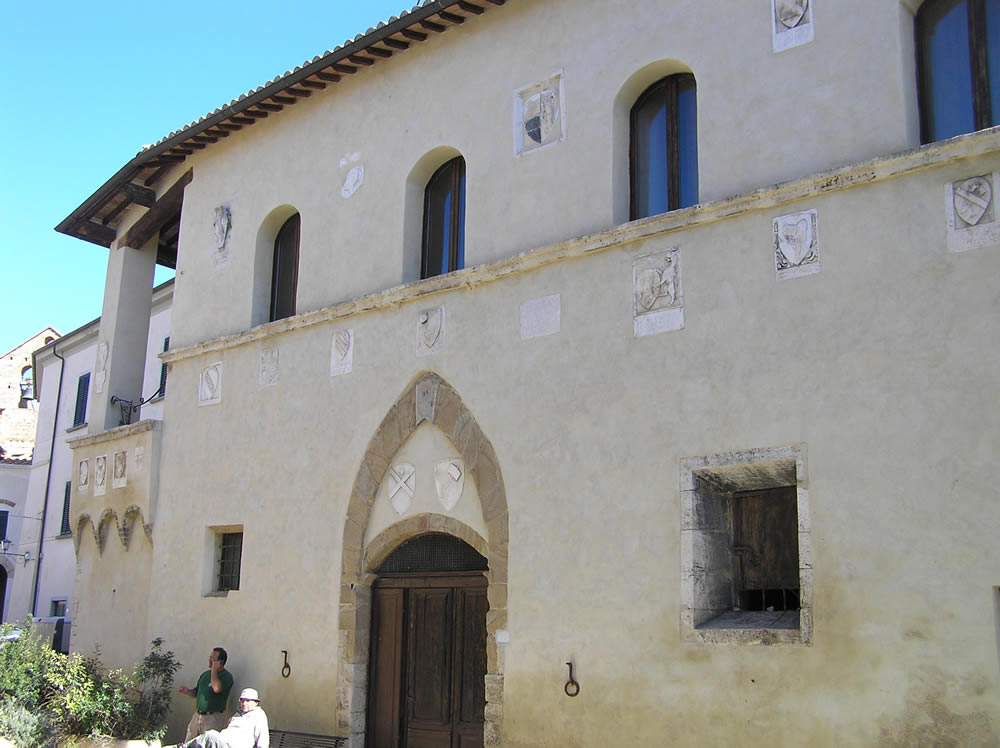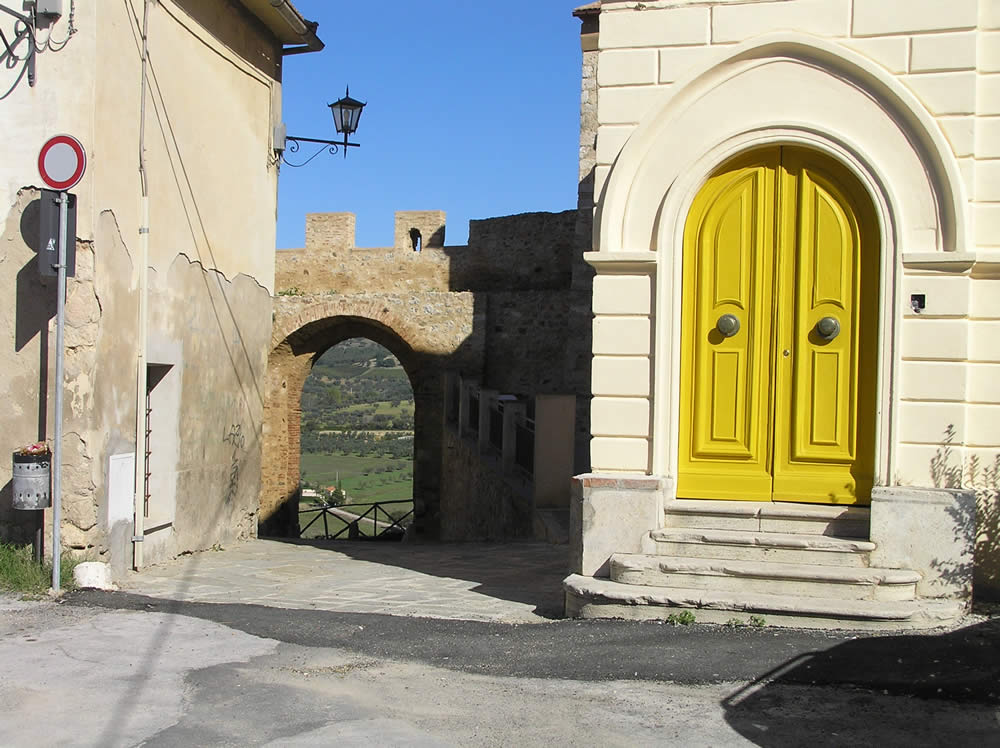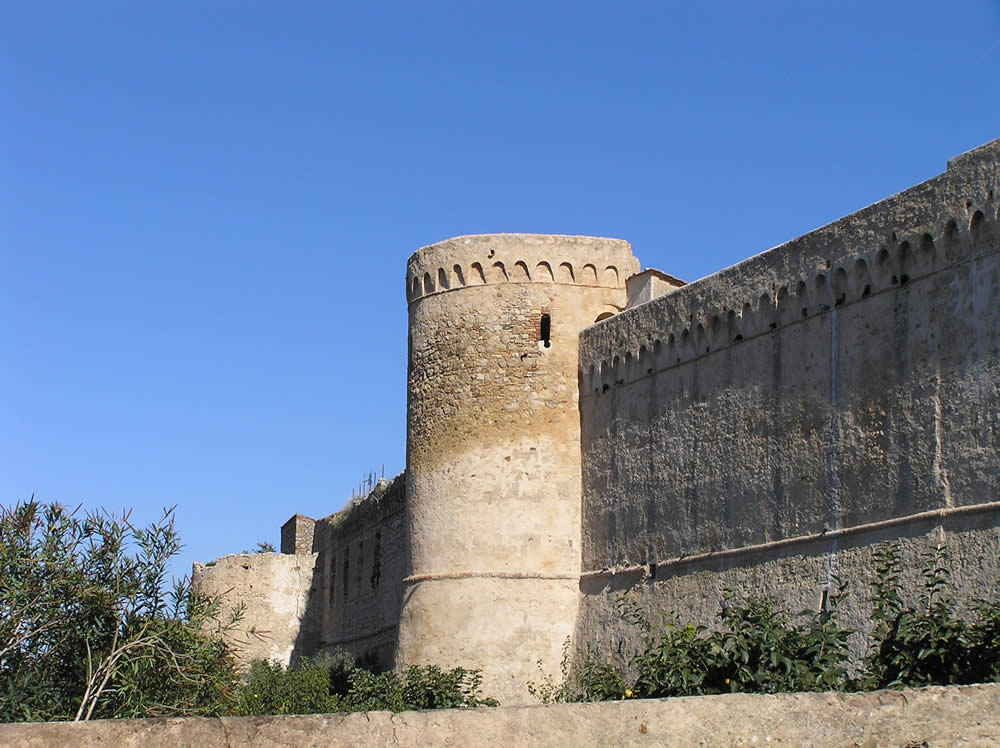Questo articolo è disponibile anche in:
![]() Italiano
Italiano
The origin of Magliano in Toscana is Etruscan (Heba), later it became a Roman municipality maintaining the Etruscan name of Heba. In a pact stipulated by Uguccione of the Aldobrandeschi counts in the year 1097, Magliano is mentioned for the first time, indicated as the center of a court, perhaps already the seat of a castle.
THE WALLS
Magliano in Toscana is a beautiful town partly surrounded by a beautiful wall, one of the most complete fortifications in the Maremma. The walls, which were built between the thirteenth and fifteenth centuries, are opened by three gates: Porta Nuova, Porta San Martino and Porta San Giovanni.
The walls were built in two different phases. In the XIII-XIV century the Aldobrandeschi counts built the part of the walls on the south-east side, with towers with a square plan, the works were completed in 1323 as written on the plaque walled up behind the tower of Porta San Giovanni. Currently, the short stretch of this part of the ancient walls remains standing which includes Porta S. Giovanni with two Aldobrandesche towers with a square plan.

The second phase of construction of the walls was carried out by the Republic of Siena which in the 15th century built the walls on the west side characterized by semicircular bulwarks. This section of the walls is the best preserved, it has six semicircular towers with loopholes, the walls ended with a protruding brick part decorated with small arches and merlons, still visible today to the left of the Porta Nuova. Continuing along the walls you reach the last gate of the walls, the Porta di San Martino.
THE PALACE OF CHECCO BELLO
Entering from Porta San Giovanni, take Corso Garibaldi, on the right we find the so-called Palazzo di Checco Bello, seat of the Monaldeschi family from Orvieto who used it as their rural residence. The building is in local stone and the structure follows the patterns of Sienese architecture of the fourteenth century.
Continuing further, in the center of the town we find the church, Romanesque with Gothic elements, of San Giovanni Battista, built in the XIII century, has a Renaissance facade, the interior with a single nave preserves an interesting baptismal font in travertine and frescoes of the school Sienese fourteenth century.

THE PALACE OF THE CAPITANO DEL POPOLO AND THE CHURCH OF SAN MARTINO
A little further on we find the Palazzo del Capitano del Popolo (or Palazzo dei Priori), a building that was built in 1425, on its facade some coats of arms of the captains are still visible. Near Porta San Martino is the Romanesque church of San Martino, built in the 11th century, it has a stone ashlar facade and the portal jambs decorated with two dragons, one of which is ridden by a human figure. The interior, in the shape of a Latin cross, is on two levels with the nave, with a rectangular plan, and the transept from the 15th century. The rectangular apse is in the Gothic style. Inside there are frescoes of the Sienese school from the XIII-XIV century.
Outside the walls, near Porta San Giovanni, the church of SS. Annunziata, with a portal with travertine architrave, the interior has a single nave with cross vaults. It preserves a fragmentary fresco decoration of the Sienese school from the early 15th century. On the sides of the altar there are the most interesting frescoes probably from the workshop of Andrea di Niccolò, on the high altar, it is the most valuable piece in the church: “The Madonna nursing the child” by Neroccio di Bartolomeo Landi (1447-1500 ).
2 km from Magliano in Toscana are the evocative ruins of the rectory of San Bruzio.
Questo articolo è disponibile anche in:
![]() Italiano
Italiano

